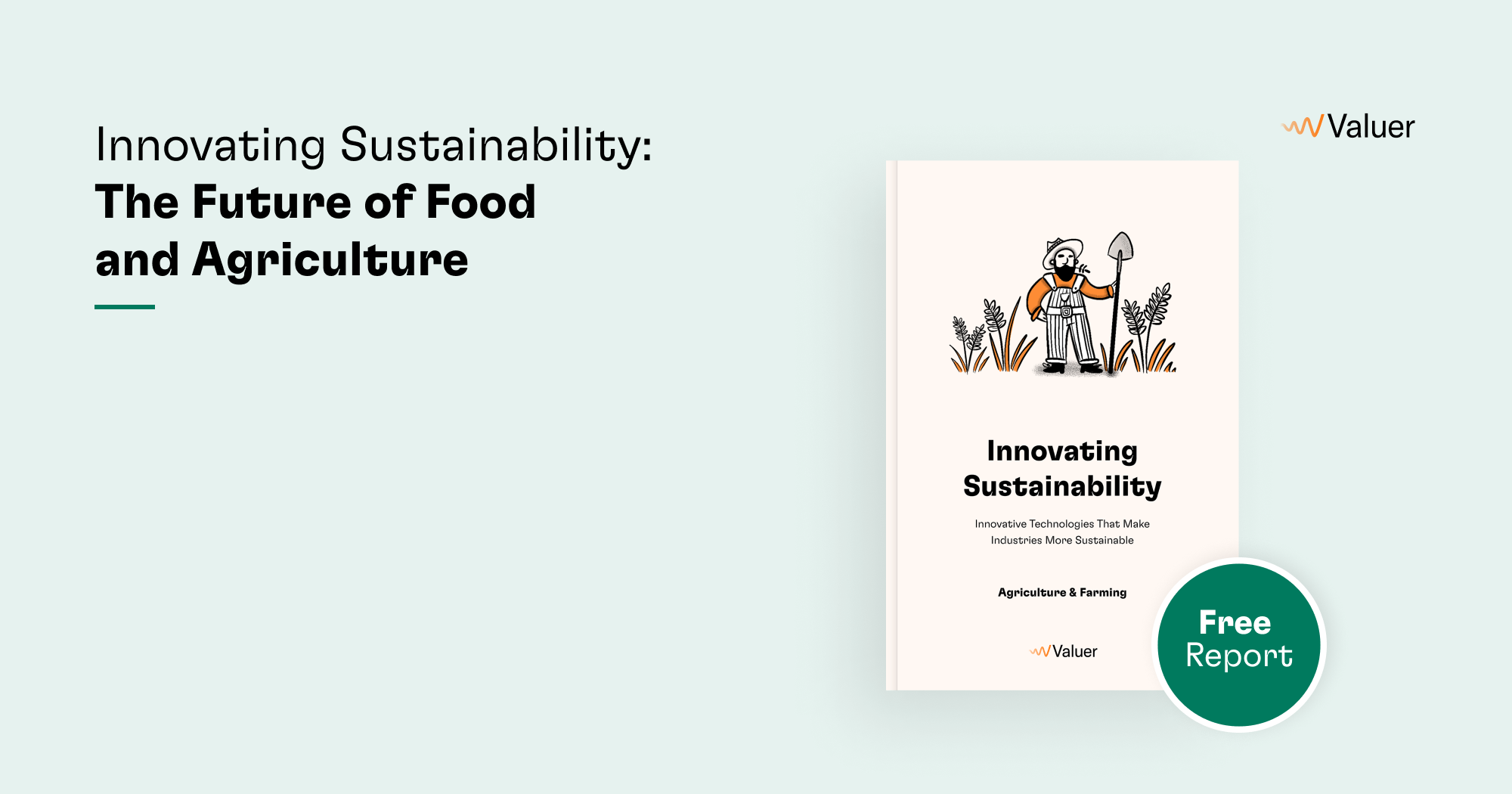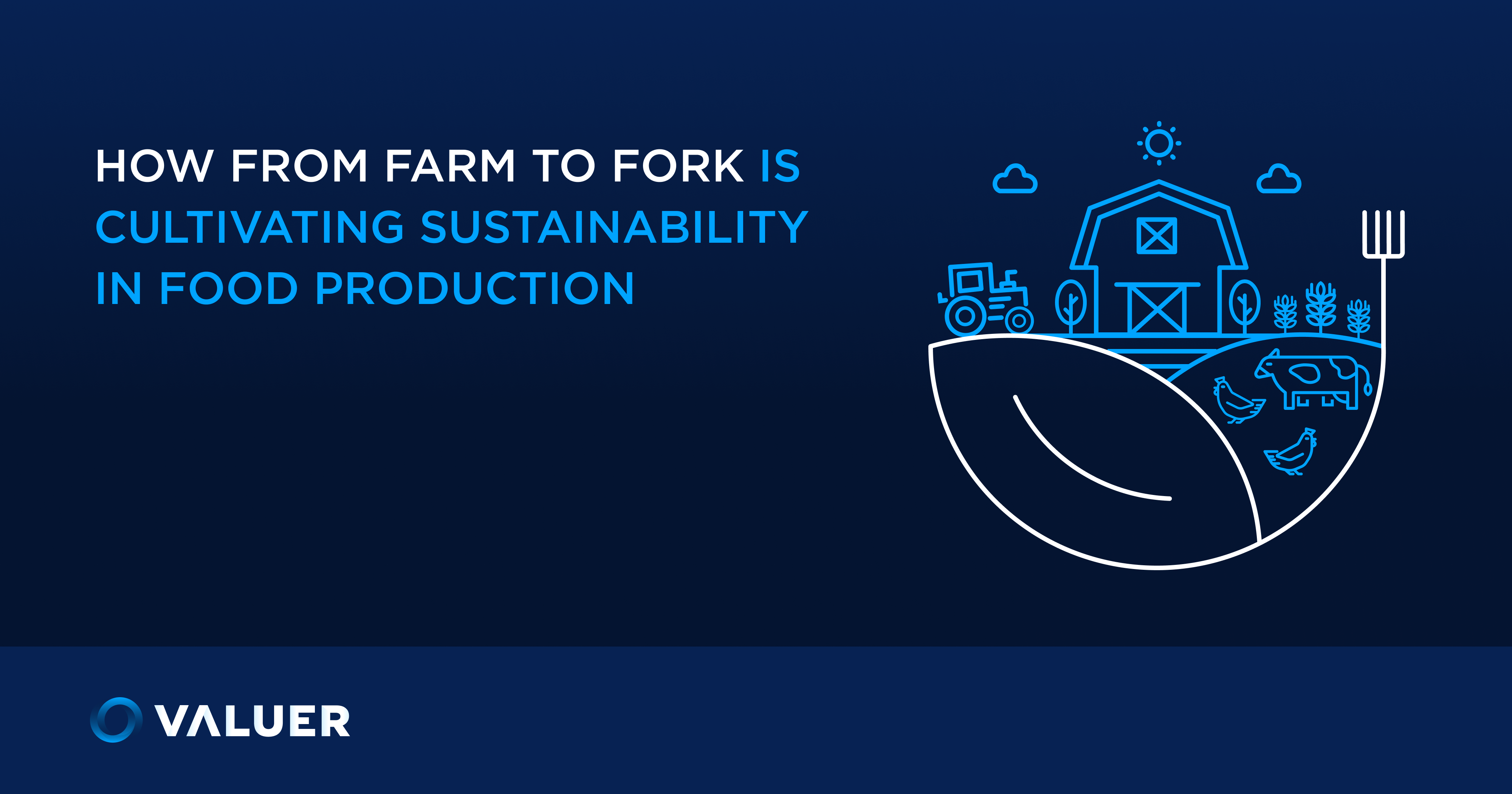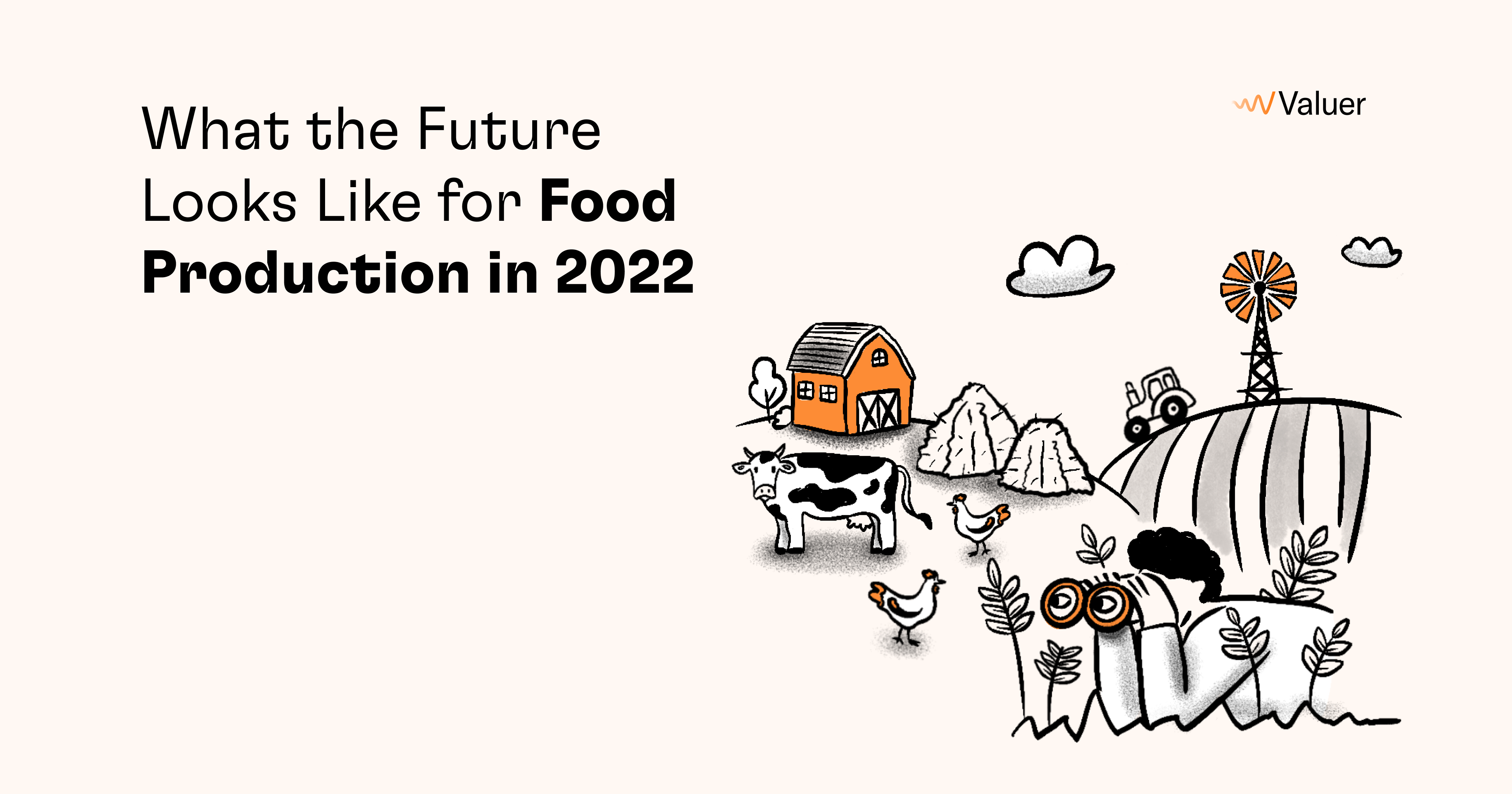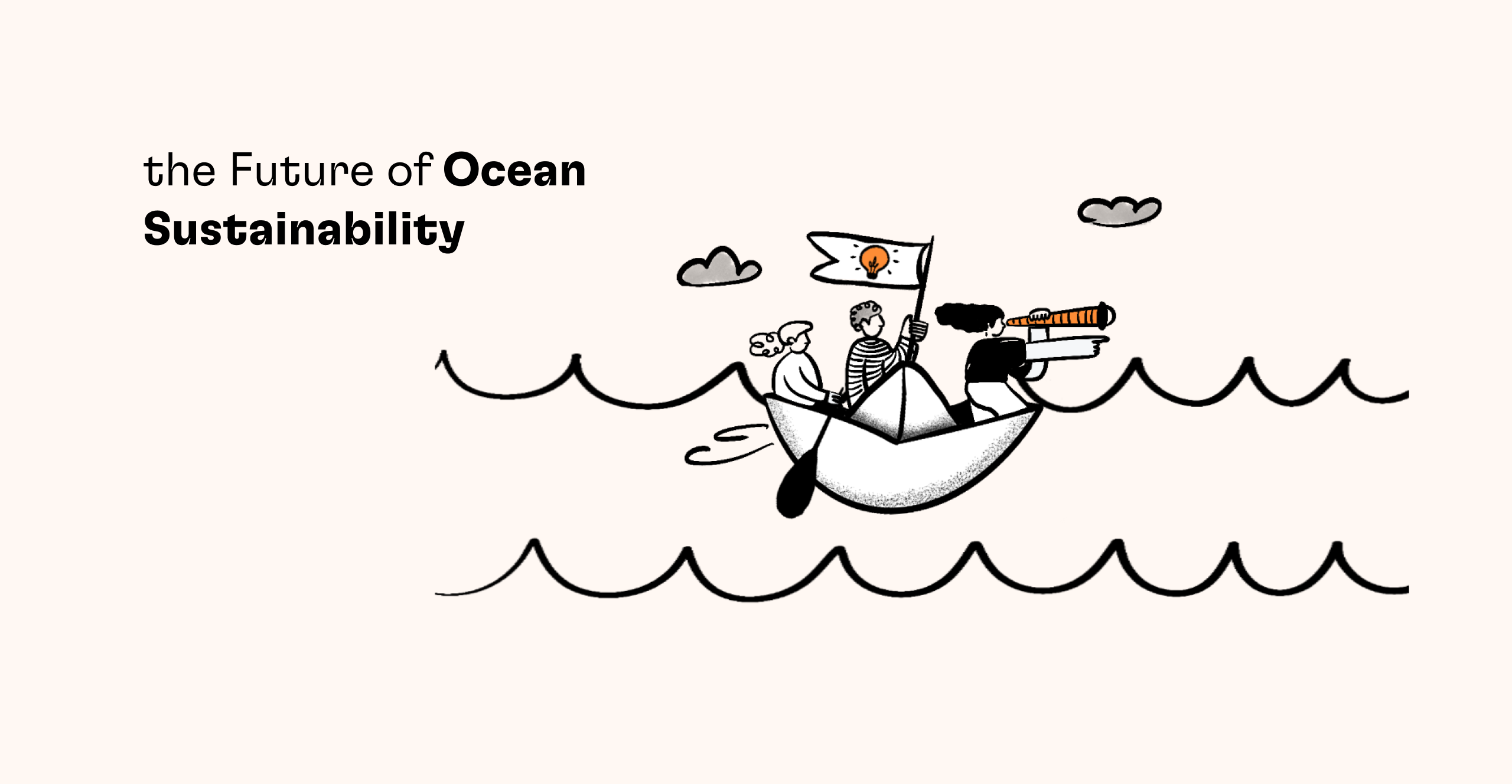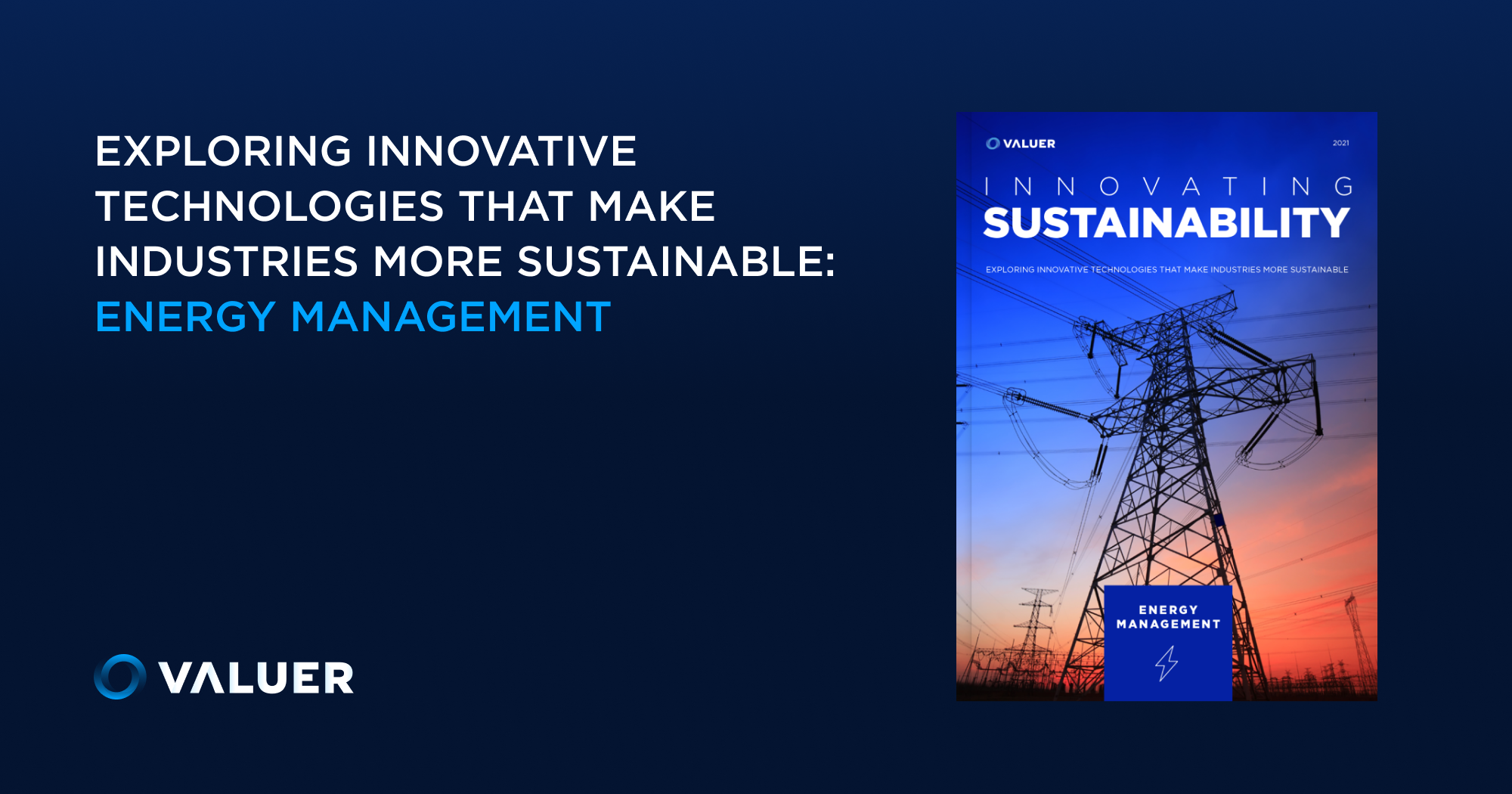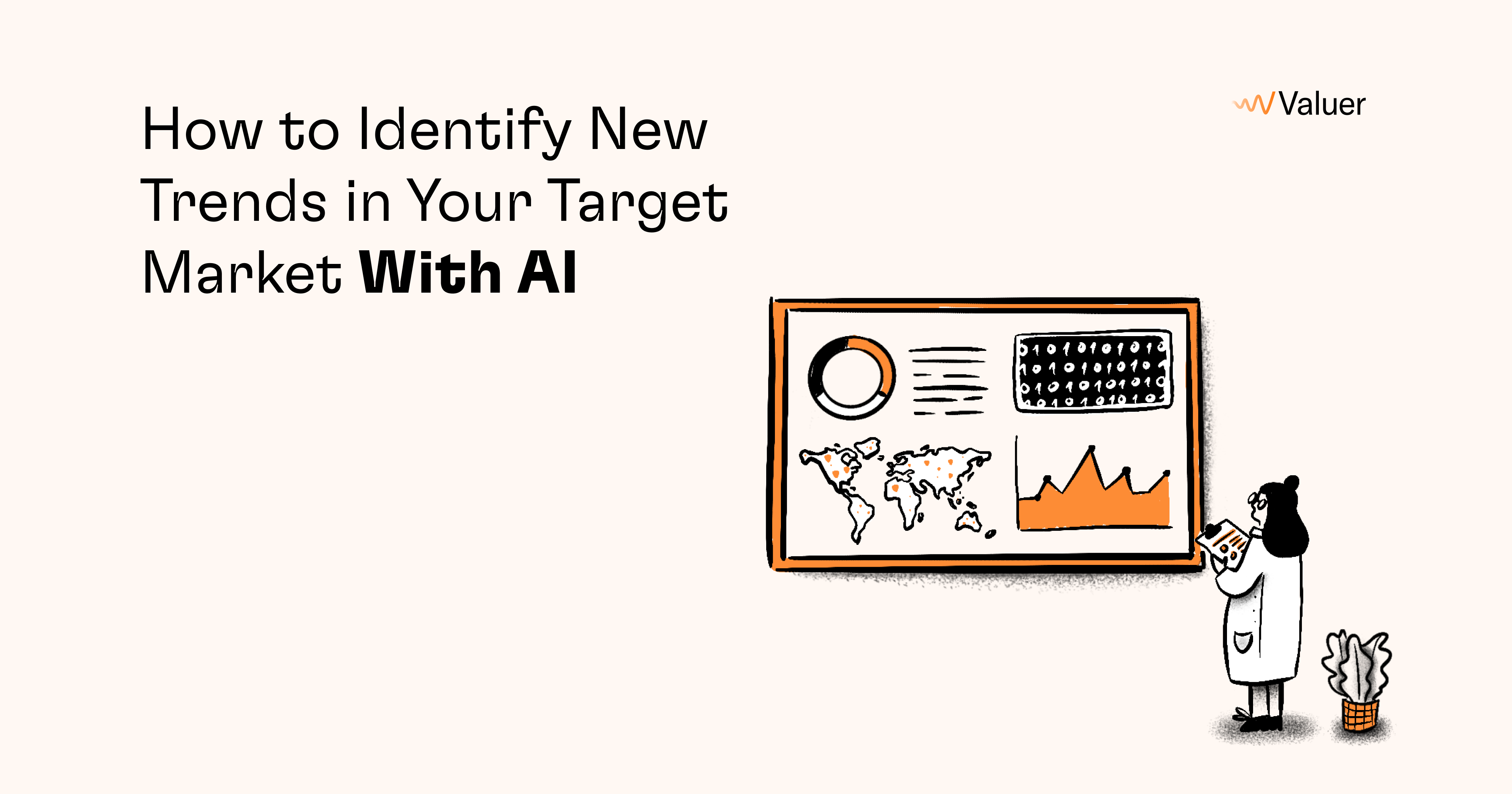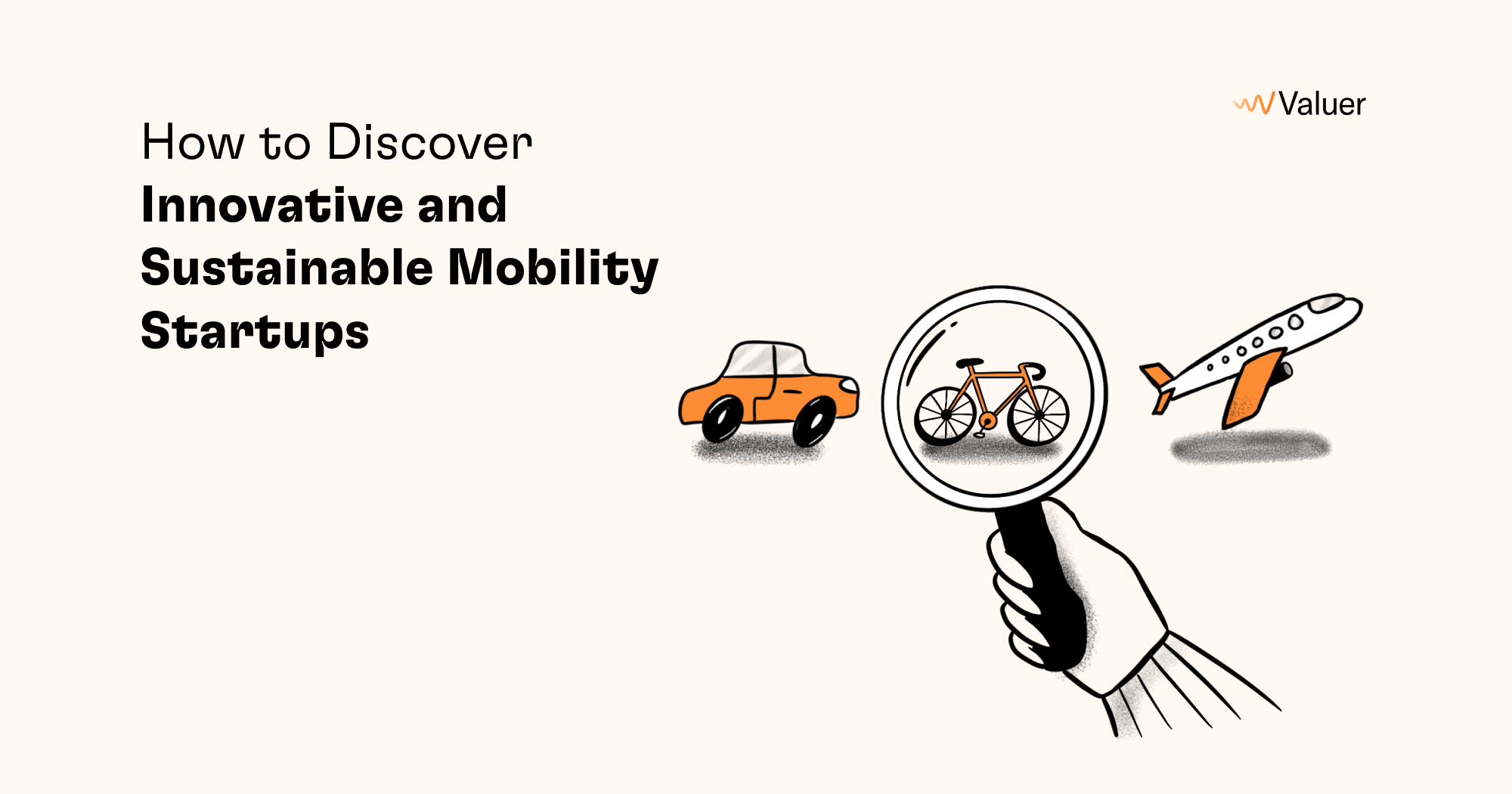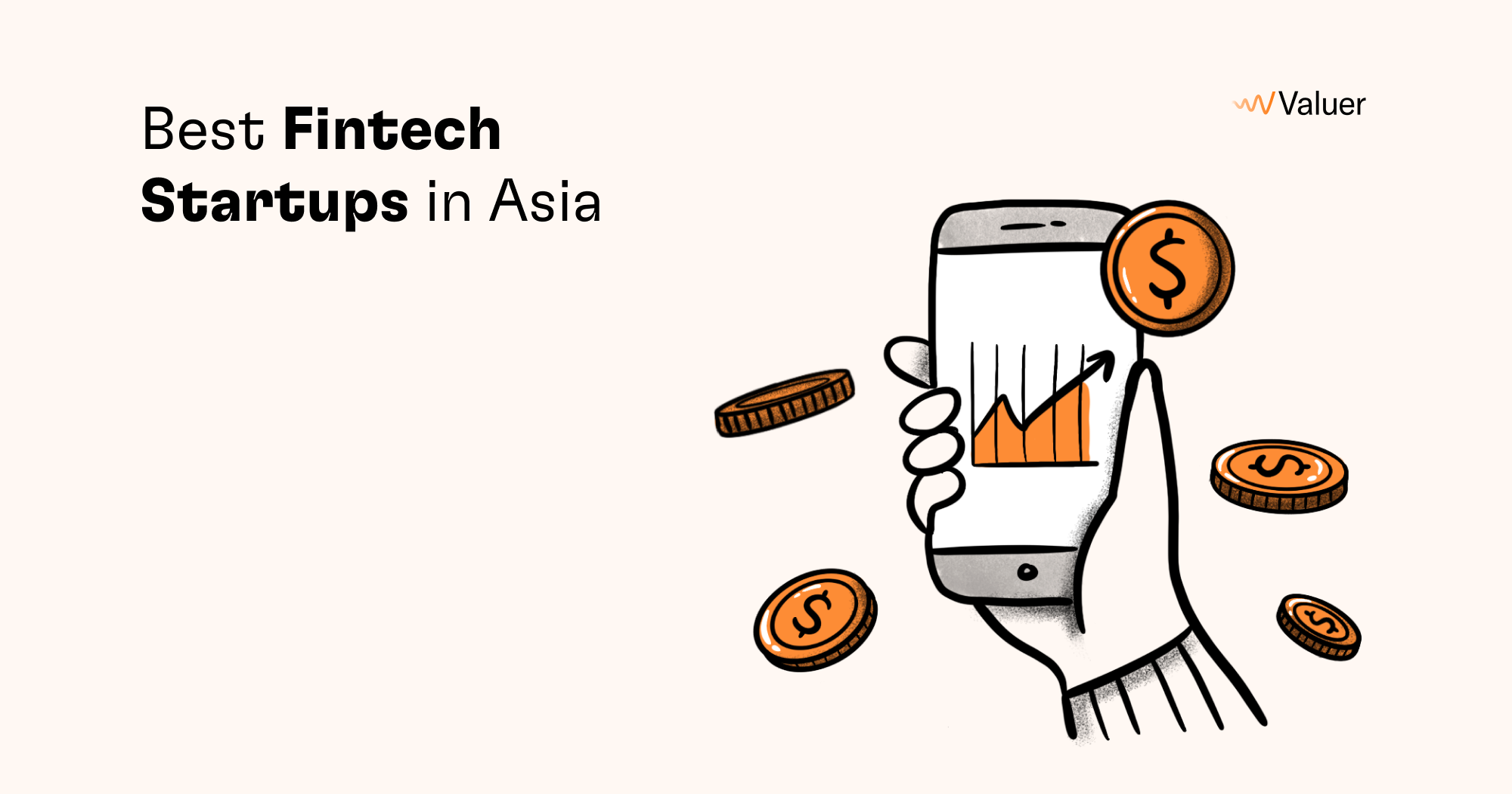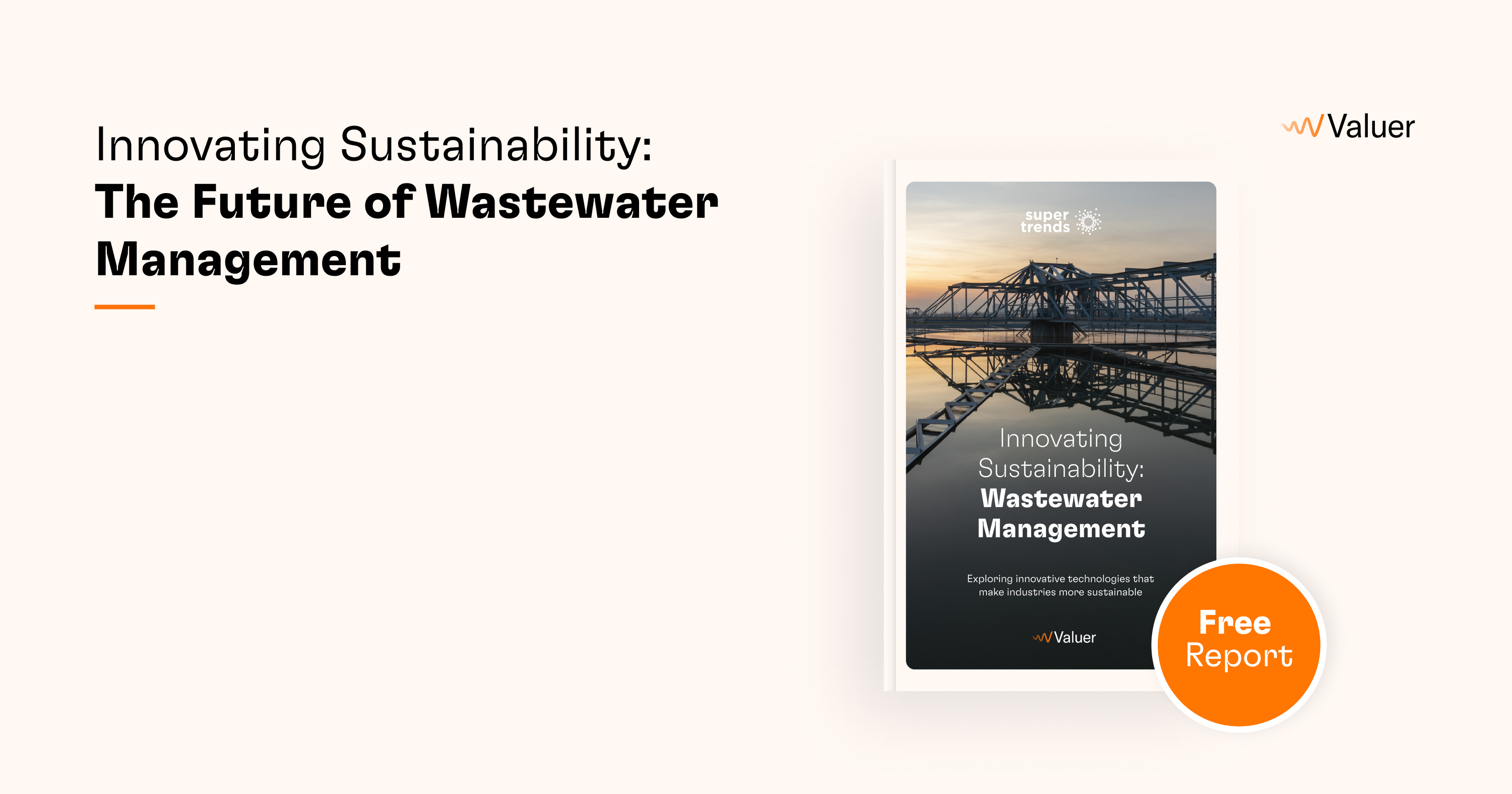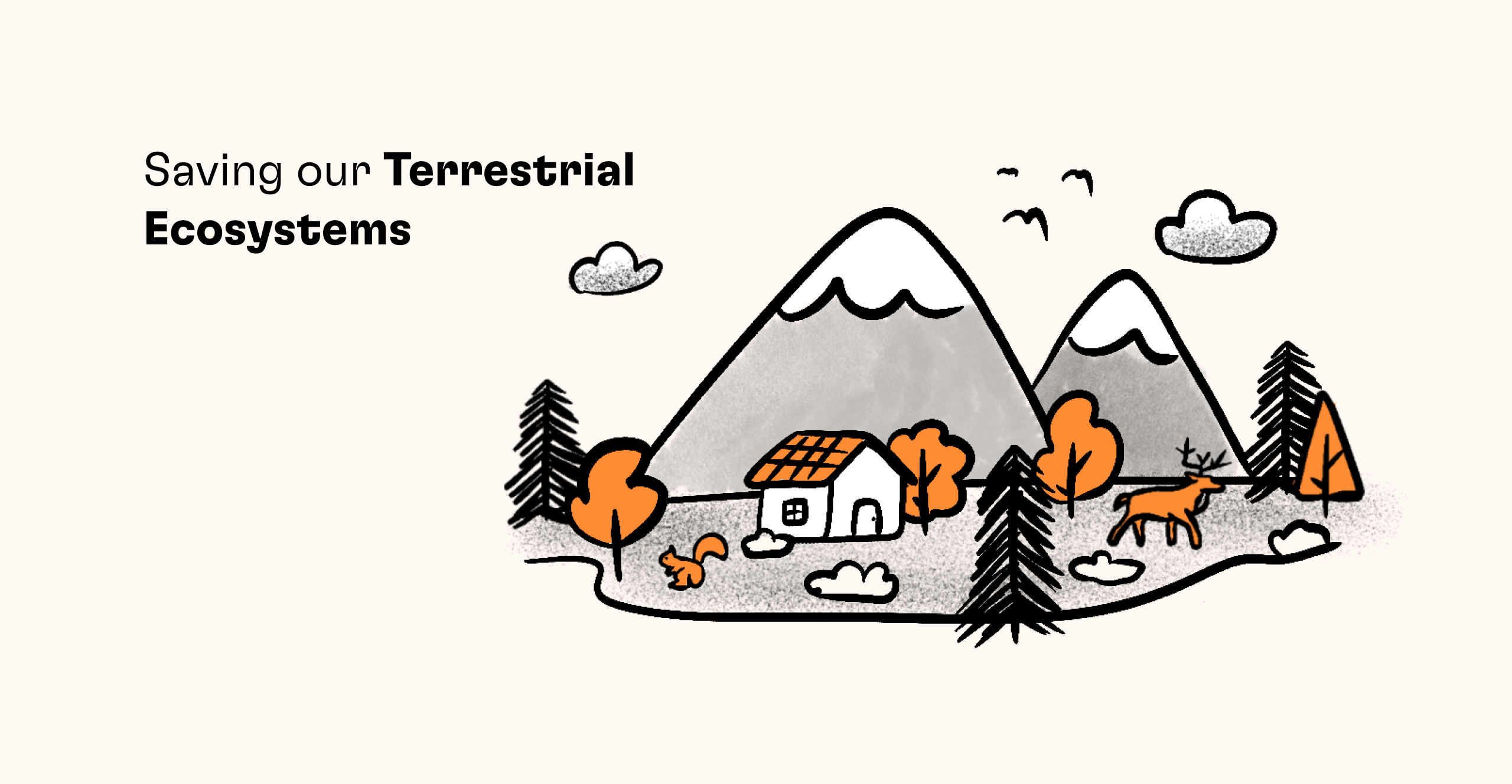*Updated October 2022
Traditional agricultural farms account for 70% of all water consumption. Around 40% of that water is actually lost due to inadequate irrigation systems and poor water management.
Undoubtedly, it's time to turn to crop farming methods that reduce water waste, eliminate the decimation of topsoil, and are more environmentally sustainable. It's also time to turn to innovations in technology for solutions to old problems.
In this article, we combine both technology and the environment by focusing on one popular sub-industry of sustainable agriculture: hydroponics. We’ll also cover up-and-coming technology in its tangential tech industries - aquaponics and vertical farming - all of which are crucial for the future of food production. Finally, you'll see how we found startups in these industries using our platform's versatile features.*
*The report was put together using the following Valuer tools to filter through the database: Explore Industries, Explore Technologies, Look-Alikes and the AI-powered search engine to discover startups. We also used the platform to find innovative technologies in specific sub-industries, startups that use them, and in-depth data on both by ordering bespoke deep dives from our research team.
What is hydroponics?
Hydroponics is a type of sustainable horticulture method that uses nutrient-rich water as a growing medium rather than soil. Hydroponics systems are set up indoors, so they are a type of controlled environment agriculture. There are several different types of hydroponics farming, including deep water systems, wick systems, etc.
Traditional agriculture wastes too much land and too much water. This, combined with the massive growth of the global population, makes our demands on this earth even more harmful, unsustainable, and soon - impossible. Hydroponics and other innovative agricultural technologies, some of which we’ll discuss below, are environmentally sustainable, and in fact, ideal for growing food in regions that have limited water supplies.
Benefits of hydroponics
Water waste is significantly reduced with hydroponics - they save 70-90% more water than soil as the aquatic solution is generally cycled back through the system. Overall, they use about 10% of the water that traditional farming does.
What’s more, as they are set up in a controlled environment, crops raised in hydroponics systems are healthier, more nutrient-rich, and grow faster than crops raised in soil. The overall yield on average is higher by 20-25% compared to traditional farms, which is a significant increase. Other sources estimate the crop yield to be up to three times as high as that of soil farming.
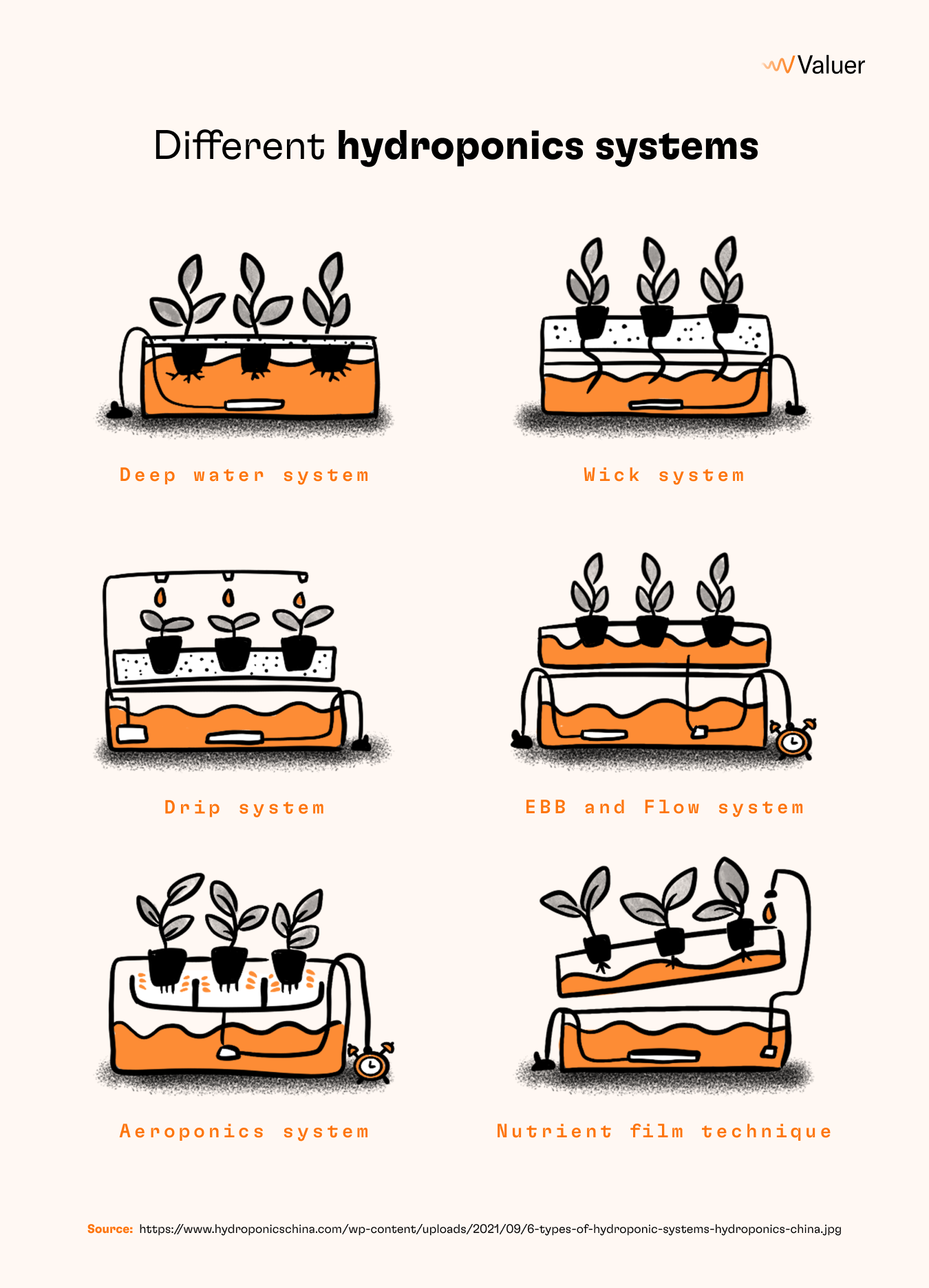
Why is the yield so much higher? Well, for one, any harsh climate is mitigated indoors, and for another, the plants don’t depend on the mercy of sunlight to grow - they have LED lights. Pest control is also easier in these indoor systems though it also helps that the plants in hydroponics systems are quite healthy. It’s like a human’s immune system - if you’re healthy, you’re less likely to get seriously ill due to any microbe.
Hydroponics systems, and their subcategories (like aquaponics, which we’ll discuss in a bit), also take up less space, as plants can be “planted” closer to each other than in farmland. They take up even less space if they’re set up as vertical farms, and they often are.
Keep in mind that for a hydroponics farm to be a truly green and healthy choice, farmers need to utilize organic fertilizers. Synthetic fertilizers are unhealthy, impoverish the soil, and can contaminate the groundwater.
How we explored the hydroponics sub-industry using the Explore Industries tool
We used the Explore Industries feature to zero in on the Agriculture & Farming industry. When we clicked on this industry, we got a huge cluster of companies that fell into one or several of the multiple sub-sectors of this field, including AgTech, precision agriculture, regenerative agriculture, aquaculture, pollination, and lots more. Then, we selected only hydroponics to discover 100 related startups, including:
Hydroponics startups from our platform:
You can also click on several marked dots in the cluster to find startups that fall into two or more sub-industries. The cluster map uses color and spatial distribution to help you visualize to what degree the sub-industries overlap in a given startup. For instance, we added “vertical farming” clusters to hydroponics, and these are some of the results that act in both hydroponics and vertical farming:
Hydroponics and vertical farming startups from our platform:
You can add additional filters to specify the features of a certain company, like investment stage, team size, year of inception, funding amount, and location. To give you an example, we set the filters to show us startups that were founded 2017-2021 and had a team between 11 and 50 people. Some of the filtered results included:
Filtered results from our platform:
How we explored the hydroponics sub-industry using the Look-alike tool
One hydroponics company in focus from the report was AeroGrow, so we also decided to use the look-alike function to find similar up-and-comers that corporations, VCs, etc., could invest in. We ran a look-alike search on AeroGrow and discovered new startups, including:
Digging through the results, we saw that a lot of the innovation in this sector is geared towards efficiency and automation through AI and IoT.
Discovering tech trends in hydroponics
Our Innovating Sustainability report summarized all the innovative hotspots and promising tech trends in the hydroponics sub-sector. We found that IoT (Internet of Things) is widespread throughout, which is also the case in other agricultural sub-industries.
IoT allows hydroponics farmers to automate processes, monitor conditions, and acquire data instantaneously, amongst other things. Some of the specific technologies we discovered were sensor-based data collectors and robotic harvesters. You can read the report for more details.
Now, onto more technology...
What is aquaponics?
Aquaponics is often considered a subcategory of hydroponics, but it is so much more than that. Aquaponics is actually the coming together of hydroponics and aquaculture (the raising of aquatic life like fish, snails, prawns, etc.) into a single, perfectly symbiotic, closed-loop indoor ecosystem.
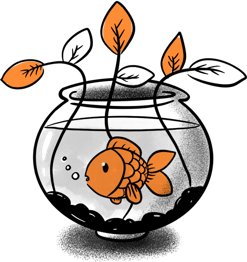
The drawbacks of hydroponics are first, the need for fertilizers, and second, the need to dispose of the water at certain intervals. The drawbacks of aquaculture are that the water becomes dirty very quickly and requires frequent change, and second, that the filth results in negative health effects for the fish.
Aquaponics, the marriage of the two disciplines, does away with - or at least minimizes - both these problems.
How does aquaponics work?
The fish swim below inside water that nurtures the plants, and both organisms grow symbiotically. The waste that fish excrete is actually plant food, like manure - and microbes convert it into plant nutrients. The microbes take the ammonia and turn it into nitrates, which the plants absorb through their roots and use as nitrogen essential for their growth. Meanwhile, in that process of absorption, the plants actually filter the water, keeping the environment of the fish and microbes clean. Just like permaculture, aquaponics mimics natural ecosystems to maintain sustainability.

This is the underlying process of how an aquaponics system functions, though there are additional tools it may require based on the type of setup. Usually, aquaponics systems require air pumps, biofilters, etc.
So do you ever need to change the water? No! Not in a functional aquaponics system, as it is incredibly efficient. The only reason that aquaponics farmers would occasionally need to add water is due to natural evaporation or due to slight water loss when the filtration unit is cleaned.
Aquaponics systems also require less monitoring of nutrients and water quality than hydroponics systems as the symbiosis aides both. It’s worth noting again that the use of IoT in agriculture has made this monitoring a lot easier. On that note, aquaponics systems have less parameters that need monitoring than hydroponics systems, so in that sense, they are more hands-free. Which raises the question…
What is the difference between hydroponics and aquaponics systems?
The similarities of these two systems are quite evident. The indoor environment lengthens the growing season and results in higher crop yields. Plant growth is faster. Both systems are better for the environment.
The differences have to do with setup cost, startup time, and sustainability. Aquaponics may be pricier in the beginning, but the cost evens out over time as they don’t need additional fertilizers, unlike hydroponics. Aquaponics also has a longer startup time, but in the long run, they’re somewhat better both in output and cost-efficiency.
In terms of sustainability, aquaponics again takes the cake. The system is closed-loop and water is only added on occasion, while hydroponics systems have to regularly renew their water to avoid nutrient build-up that’s harmful to the plants, especially if they use synthetic fertilizers.
That’s another thing - aquaponics only uses the natural fish waste to fertilize plants, while hydroponics owners can choose between organic and synthetic fertilizers, and the latter are bad for the health of soil, ecosystems, and animals - including humans. Finally, pesticides can’t be used in aquaponics because they’ll kill the fish. On the other hand, it’s up to hydroponics owners whether they use pesticides or healthier, organic alternatives.
How we found aquaponics startups using our AI-powered search engine
Aquaponics is not listed as a direct sub-industry on the platform, but that doesn’t make it any more difficult to find innovative tech or startups that fit the bill. If you already have an aquaponics company in mind, you could simply use the look-alike feature.
But there is another efficient way that you can search for companies. Seek and you shall receive - write exactly what you want in the search bar of the Description feature and feast on the results that our AI provides. For instance, you can search:
“Find aquaponics startups that use IoT technologies or setups for vertical gardens.”
Next, the AI assistant gave us the option to select up to 5 industries to further filter the results, and we clicked on “Sustainability,” “Software,” and “Agriculture & Farming.” We got some really innovative, highly relevant startups in the results, including:
Aquaponics startups on our platform:
Now, let’s jump into another area of focus from our report, and that is vertical farming and water-based agriculture.
Vertical farming and water-based agriculture
One of the benefits of both aquaponics and hydroponics is that they use less space than traditional farming, and that’s most evident when these systems are set up as vertical farms.
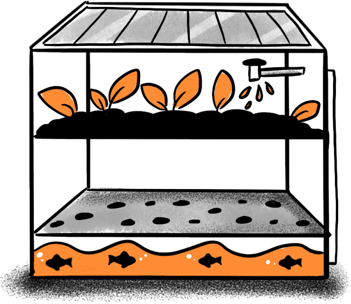
Vertical farming is exactly what it sounds like - growing crops in stacked layers, usually indoors. Temperature, light, and space optimization are factors that can be manipulated in these closed environments, so vertical farms yield more crops in smaller spaces in comparison to traditional farms. Vertical farming is especially needed in places with limited space, such as urban areas. In fact, with the right infrastructure, vertical farms could supply local populations with fresh, farm-to-table produce.
Discovering tech trends in vertical farming
Vertical farming is both a sub-industry of Agriculture & Farming and a category of its own in Valuer’s Explore Technologies feature, which includes the most innovative, cutting-edge up-and-comers. For this one, let’s focus on the vertical farming tech trends that we found in the report’s deep dive:
- Aeroponics - This is a system where a plant’s roots aren’t in water like hydro or aquaponics but are dangling. The roots are sprayed with water and nutrients and often set up as vertical farms.
- AI - AI is a consistently relevant field in the present and future of agriculture. AI in vertical farming comes in the form of sensors that send data to farmers and automate processes.
- High-efficiency LEDs - These are another step in boosting the sustainability of these systems.
If you want to discover more about a particular technology like vertical farming, you can request a custom deep dive prepared by our research team that will include detailed descriptions, applications, maturity, market predictions, and sustainability. These are all actionable insights, as they’ll help you make a well-informed decision about the next step in your journey.
How we found vertical farming startups using the Explore Technologies feature
Once you have selected a technology like vertical farming from the results page, you have the option to view companies and organizations that use it. These are some of our results:
Vertical farming startups on our platform:
The results combine different aspects of the industry and technology, ranging from vertical farming equipment shops to consumer products provided through vertical farming.
You can also fine-tune the results here with the use of filters. For instance, we specified the location as the UK and that the inception date should be in the range of 2012-2021. Some of the results included:
Filtered results:
Just as you can order a deep dive report on this - or any listed - technology on our platform, you can also request a custom deep dive on a particular company that’s popped up in your results. This feature is especially useful for R&D teams that are trying to weigh in on the specifics when they narrow down their search for future investment opportunities.
Let the soil rest and invest in sustainable innovation
In the end, what we need are systems of food production that will be able to handle a growing population and let the soil rest. The spread of traditional agriculture has a high cost. Conventionally managed topsoil has resulted in the decimation of microbial life which is crucial to the survival of the earth and life on it.
Our platform can help you find innovative technologies and startups that will be a part of a better future. The versatile features allow you to find hot tech trends in aquaponics, hydroponics, vertical farming, regenerative agriculture, and lots of other categories. The data-driven engine will allow you to leave with actionable data and deep insights into the technology, startups, and shifting currents in various industries.
.png?width=103&height=103&name=Untitled_Artwork%20725%20(2).png)
